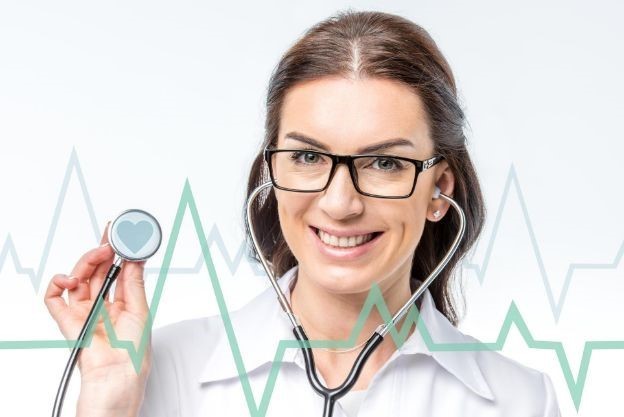
Roles of Digital Information Technologies in Health Care
IT has significantly improved the quality of care that patients have been receiving during the last decades. Complex systems integrate data from various sources, and then make it possible to retrieve, visualize, process, and send the needed electronic information to the medical professionals who require it.
 These are the most important healthcare-related systems and technologies.
These are the most important healthcare-related systems and technologies.
1. Electronic Medical Records (EMR) allow clinicians to have quick access to their patients' information, including their current medical condition, a list with diagnostics, allergies, contact info, and more. EMRs allow medical professionals to work efficiently and reduce the number of potential errors.
Additionally, specialized applications can extract data from medical records automatically, and then use it for billing-related purposes, public health disease monitoring, and more. Unlike traditional health records, EMRs can be stored easily, and the information can be accessed from anywhere in the world by the medical professionals who have been given access to the database.
2. Electronic Prescribing, also known as E-prescribing, involves the transmission of electronic prescriptions through a dedicated network which supports bidirectional communication. Modern e-prescribing systems can add, edit or change dose, remove medication from the active list, signal potentially inappropriate interactions with other drugs, monitor active ingredients and excipients with the goal of preventing certain allergies from being triggered, and so on.
E-prescribing provides several advantages. It eliminates most prescribing errors and minimizes costs by reducing the number of minutes that are required to execute a prescription. It gives people access to less expensive medication which has the same active ingredients and lowers drug abuse by highlighting duplicative prescriptions.
3. Clinical Decision Support Systems (CDSS). These systems allow health care professionals to take better medical decisions by making use of advanced, industry-specific artificial intelligence algorithms.
CDDSs were utilized as decision-making tools for clinicians in the past, when doctors used them to input the required data, and then allowed the system to pick the "best" solution. However, modern clinical decision support systems utilize their AI power to analyze the data, and the output is used by clinicians as a tool which assists them to choose the best treatment methods/solutions.
4. Computerized Provider Order Entry (CPOE) systems can send treatment instructions by making use of a digital system, thus replacing paper, phone calls, faxes, etc. Medical institutions which have implemented CPOE to generate electronic documents have managed to reduce the number of potential errors significantly. The system can also send orders to providers, thus improving efficiency. Most hospitals make use of CPOE to order drugs, X-rays, ask for referrals, transfer medical personnel, and more.
5. Remote Patient Monitoring (RPM) and Telehealth. With RPM, patient data can be gathered outside health care units. By making use of modern technologies, doctors can involve patients in the medical care act, making them feel much more comfortable. With remote patient monitoring, caregivers can get access to relevant data as soon as it becomes available.
Telehealth incorporates RPM, encompassing various technologies that are used to gather, process and exchange information. So, while some people use Remote Patient Monitoring and Telehealth interchangeably, the terms don't convey the same information.
